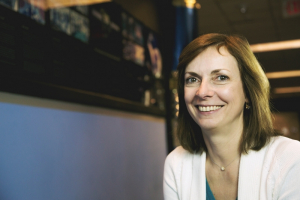The theory of space architecture sounds simple: design and build environments for outer space. Its completion, however, is anything but. And for engineers and designers looking to hone their skills at space architecture, only one campus provides the specific education they need: the University of Houston.
The world’s first research and education program in space architecture was launched in 1987 by Larry Bell at UH. Today, the center is known as the Sasakawa International Center for Space Architecture, or SICSA, and it is the world’s only program offering a master’s degree in the discipline. Coupled with the campus’ proximity to NASA’s Johnson Space Center (JSC), the center draws academics from around the world. Lately, they’re flocking to campus from every corner of the globe.
Earlier this month, a group of 13 students and two professors from the Technical University of Crete spent a week at SICSA for an event coordinated by Olga Bannova, research associate professor of space architecture. At their home university, the students worked as a team on a project designing a habitable environment on Mars. Bannova said their initial project was strong, but lacked a detailed understanding of the actual architecture specifics required.
“The idea was to give them a sort of reality check and show them how we do it,” she said. “Our program is based on real technologies and current and emerging technologies. We’re trying to teach students to think about the mission as a whole. Not just designing one piece.”
After a week of studying in-depth space architecture elements, Bannova said the students tweaked their project to include more realistic designs.
In addition to intense workshops at SICSA, students also visited the NASA JSC Habitation Demonstration Unit and the Lunar Planetary Institute. They also attended talks from leading space experts, including former NASA astronaut Bonnie Dunbar, chair of the aerospace engineering program at UH.
On April 20, a group of Russian students studying mechanical engineering with a concentration in space visited SICSA as part of the Moscow Summer Intern exchange program, hosted by the Baker Institute for Public Policy at Rice University. They also visited the Texas Center for Superconductivity and several engineering departments at the Cullen College.
The exchange program, which also sends U.S. students to Moscow in the summer, gives students an in-depth look at the approach to space exploration for both the U.S. and Russia. In a world where Russia and the U.S. are two of the biggest driving forces in space exploration, it’s a rare opportunity to see the industry from the two largest sides of the coin.
As for SICSA and the visiting ambassadors, Bannova said one of the biggest draws for international students is the hands-on approach to space architecture available exclusively at UH.
“We want students to understand this holistic approach, the big picture. We’re talking about human spaceflight, so you have to understand not just hardware… but also psychological effects, social effects. It’s so important during missions,” Bannova said.

